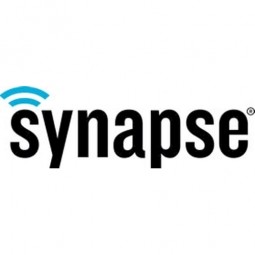
技术
- 应用基础设施与中间件 - 数据可视化
- 功能应用 - 远程监控系统
- 网络与连接 - 网关
- 网络与连接 - 射频收发器
- 网络与连接 - 射频识别
- 传感器 - 气体传感器
适用行业
- 城市与自治市
适用功能
- 商业运营
用例
- 远程资产管理
客户
丛控制
关于客户
挑战
虽然我们不经常考虑这一点,但垃圾填埋场中物质的分解可能会产生甲烷和硫化氢气体。这些气体存在爆炸风险(因为它们都是易燃的),硫化氢会危害健康——如果大量吸入,可能会导致死亡。鉴于这两种垃圾填埋场副产品的波动性,许多地方政府寻求更好的方法来监测其垃圾填埋场中这些气体的潜在产量。此外,看到这些地方政府的需求,加拿大拥有的无线监测和控制产品的设计者和制造商 Plexus Controls 决定开发一种产品,用于监测垃圾填埋场的甲烷和硫化氢气体。
解决方案
使用基于 Synapse SNAP® 的射频模块和物联网网关,Plexus Controls 创建了一套产品来满足客户的需求。通过将基于 SNAP 的 RF 模块连接到气体检测传感器,Plexus Controls 可以在垃圾填埋场快速部署传感器网络,而无需处理铺设电线以传输传感器数据的时间和费用。然而,收集传感器数据并不是一个完整的解决方案。 Plexus Controls 需要一个可以收集所有传感器数据以显示在易于访问的用户界面上的集中式集线器。使用基于 SNAP 的物联网网关,他们的客户只需使用 Web 浏览器即可访问所有传感器数据。
收集的数据
Gas Emissions, Operating Cost, Pollutants detection
运营影响

Case Study missing?
Start adding your own!
Register with your work email and create a new case study profile for your business.
相关案例.

Case Study
Turning A Stadium Into A Smart Building
Honeywell created what it called the “intelligent system” for the National Stadium in Beijing, China, turning the venue for the opening and closing events at the 2008 Summer Olympics into a “smart building.” Designed by highly controversial artist Ai Weiwei, the “Bird’s Nest” remains one of the most impressive feats of stadium architecture in the world. The 250,000 square meter structure housed more than 100,000 athletes and spectators at a time. To accommodate such capacity, China turned to Honeywell’s EBI Integrated Building Management System to create an integrated “intelligent system” for improved building security, safety and energy efficiency.
.png)
Case Study
Smart Street Light Network (Copenhagen)
Key stakeholders are taking a comprehensive approach to rethinking smart city innovation. City leaders have collaborated through partnerships involving government, research institutions and solution providers. The Copenhagen Solutions Lab is one of the leading organizations at the forefront of this movement. By bringing together manufacturers with municipal buyers, the Copenhagen Solutions Lab has catalyzed the development and deployment of next-generation smart city innovations. Copenhagen is leveraging this unique approach to accelerate the implementation of smart city solutions. One of the primary focus areas is LED street lighting.

Case Study
Buoy Status Monitoring with LoRa
The Netherlands are well-known for their inland waterways, canals, sluices and of course port activities. The Dutch Ministry of Infrastructure indicates that there are thousands of buoys and fixed items in and near water environments that would profit from IoT monitoring. One of the problems with buoys for example, is that they get hit by ships and the anchor cable breaks. Without connectivity, it takes quite some time to find out that something has happened with that buoy. Not to mention the costs of renting a boat to go to the buoy to fix it. Another important issue, is that there is no real-time monitoring of the buoys at this moment. Only by physically visiting the object on the water, one gains insight in its status.

Case Study
Barcelona Case Study
Barcelona’s heavy traffic and its associated high levels of pollution were the primary factors that motivated some companies and universities to work on strategies for improving traffic in the city centre. Bitcarrier is one of the technologies involved in the In4Mo Project, whose main objective is to develop the applications that form the core of smart mobility, one of the fundamental pillars of the smart city concept.

Case Study
China Mobile Smart Parking
Smart Parking, powered by NB-IoT technology, is making it easier for drivers to find free parking spots. Cities can better manage their parking assets and maximize the revenue available to them as a result. Drivers searching for parking create congestion and pollution by circling and hunting for available parking. Smart Parking services are able to significantly ease these problems by guiding a driver directly to a parking space.








